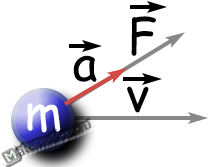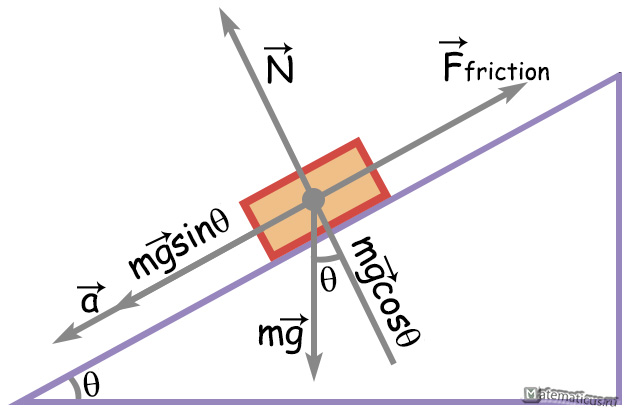Newton’s first law (the law of inertia)

The body keeps its speed constant (uniform rectilinear motion v=const, a=0) or is at rest while the body is not affected by external forces.
F=0
F — force, N.
Newton’s second law
The force acting on a body is equal to the product of mass and acceleration.
F=ma
m — mass, kg;
a — acceleration, m/s2.

Newton’s second law applies only to terrestrial bodies moving at a low speed. An example of Newton’s second law is the motion of a body along an inclined plane discovered by Galileo Galilei.

N+Ffriction+mg=ma
N — the reaction force of the support.
Ffriction — friction force, determined by the formula Ffriction=µN
μ is the coefficient of rolling friction.
X-аxis:
Ffriction−mgsinθ=ma
Y-аxis:
N−mgcosθ=0
Newton’s third law

The forces acting on each other are opposite in direction and equal in modulus
F12=−F21
m12a12=−m21a21
